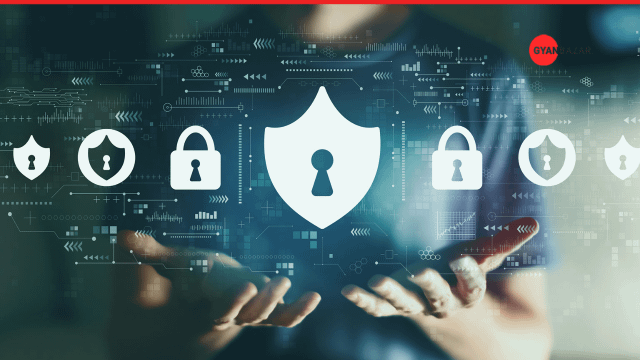In today’s digital age, where technology plays an integral role in our lives, it is crucial to prioritize the security of our home networks. With the increasing number of cyber threats and the potential risks they pose, implementing effective cybersecurity measures is essential. This article aims to provide you with valuable tips and tricks to enhance the security of your home network, ensuring your online safety and peace of mind.
Understanding the Importance of Cybersecurity
With the rapid advancement of technology, our homes have become increasingly interconnected. From smart devices to home automation systems, our reliance on the internet and Wi-Fi networks has grown significantly. However, this connectivity also opens doors for cybercriminals to exploit vulnerabilities and gain unauthorized access to our personal information. Therefore, it is crucial to take proactive steps to secure our home networks and safeguard our digital lives.
Update Your Network Equipment
Keeping your network equipment up to date is paramount in maintaining a secure home network. This includes your router, modem, and any other networking devices. Manufacturers frequently release firmware updates that address security vulnerabilities and improve overall performance. By regularly updating your network equipment, you ensure that potential security flaws are patched, reducing the risk of unauthorized access.
Strong and Unique Passwords
One of the most basic yet effective ways to protect your home network is by setting strong and unique passwords. Avoid using common passwords or easily guessable combinations. Instead, create complex passwords that include a mix of uppercase and lowercase letters, numbers, and special characters. Additionally, ensure that each device connected to your network has its own unique password, further enhancing your network’s security.
Enable Network Encryption
Enabling network encryption adds an additional layer of protection to your home network. The two primary encryption protocols are WPA2 (Wi-Fi Protected Access 2) and WPA3. WPA2 has been widely used and is considered secure, while WPA3 offers enhanced security features. To secure your network, choose the appropriate encryption protocol in your router settings and set a strong passphrase.
Implement a Firewall
A firewall acts as a barrier between your home network and potential external threats. It monitors incoming and outgoing network traffic, filtering out suspicious or malicious activities. Many routers come with built-in firewalls, but you can also consider using a dedicated hardware or software firewall for added protection. Ensure that your firewall is properly configured to maximize its effectiveness.
Disable Remote Management
Remote management allows you to access your router’s settings from outside your home network. While it can be convenient, it also poses security risks if not properly secured. It is recommended to disable remote management unless necessary. By doing so, you minimize the chances of unauthorized individuals gaining control over your router’s settings and compromising your network’s security.
Utilize Guest Networks
Guest networks are an excellent way to enhance the security of your home network, especially when you have visitors or friends who require internet access. By setting up a separate network for guests, you isolate their devices from your main network, preventing potential unauthorized access to your personal data. Make sure to enable password protection for the guest network and periodically change the password for added security.
Regularly Update Software and Devices
Keeping all your devices and software up to date is essential in maintaining a secure home network. Software updates often include critical security patches that address known vulnerabilities. Enable automatic updates whenever possible to ensure that you receive the latest security fixes promptly.
Secure Your Wi-Fi Network
Securing your Wi-Fi network is crucial to prevent unauthorized access and protect your data. Consider the following measures:
- Change the default SSID (Service Set Identifier) of your Wi-Fi network to a unique name that does not reveal personal information.
- Disable SSID broadcasting to make your network less visible to potential attackers.
- Enable MAC (Media Access Control) address filtering to only allow specific devices to connect to your network.
- Use Wi-Fi Protected Setup (WPS) with a strong PIN or disable it altogether if not needed.
Be Cautious with IoT Devices
Internet of Things (IoT) devices, such as smart thermostats, security cameras, and voice assistants, have become increasingly popular in homes. However, they can also introduce vulnerabilities to your network if not properly secured. Follow these best practices:
- Change default usernames and passwords on IoT devices.
- Regularly update firmware on IoT devices to patch security vulnerabilities.
- Disable unnecessary features and services on IoT devices.
- Segment your network to isolate IoT devices from your main network.
Use a Virtual Private Network (VPN)
A VPN adds an extra layer of security and privacy to your online activities. It encrypts your internet traffic and routes it through a secure server, making it difficult for cybercriminals to intercept your data. When connected to a VPN, your IP address is also masked, enhancing your anonymity. Consider using a reputable VPN service to protect your home network, especially when accessing sensitive information or using public Wi-Fi networks.
Educate Your Family Members
Cybersecurity is a collective responsibility. Educate your family members about safe online practices to ensure the security of your home network. Teach them about the importance of strong passwords, avoiding suspicious links and attachments, and being cautious while sharing personal information online. By fostering a culture of cybersecurity within your household, you enhance the overall protection of your home network.
Conclusion
Securing your home network is vital in today’s digital landscape. By implementing the tips and tricks mentioned in this article, you can significantly enhance the cybersecurity of your home network and protect your personal information from potential threats. Remember to regularly update your network equipment, set strong passwords, enable network encryption, utilize firewalls, and stay vigilant with IoT devices. By prioritizing the security of your home network, you can enjoy a safer and more secure online experience.
Remember, safeguarding your home network is an ongoing process. Stay informed about emerging threats and new security practices to adapt and strengthen your defenses. With the right precautions and a proactive mindset, you can leave behind the worries of cyber threats and enjoy a secure digital environment.

